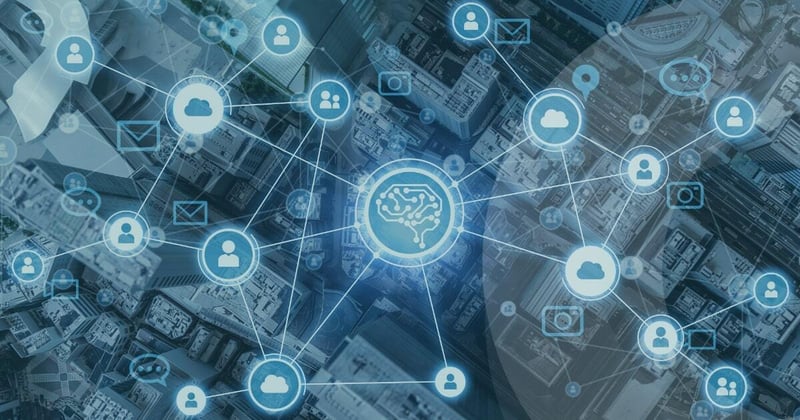Why Intelligent Automation should play a key part in your investigations
The digitisation of professional investigation and intelligence operations has led to a rise in technologies with the potential to transform investigative processes. One such approach, Intelligent Automation (IA), is a critically important part of those developments.
IA is automation technology that applies Robotic Process Automation (RPA) to standardise and accelerate repetitive data management tasks. It automates the categorisation, filtering and cross-referencing of data sets, applying advanced analytics which the investigator can interpret, in order to call attention to important or relevant data. This maximises the potential of investigators and minimises the risk of missed insights.
In many cases, investigations do not follow a straight line. Investigators need to use the context of the investigation to direct their next line of enquiry. This makes it very hard, if not impossible, to apply Artificial Intelligence (AI) to complex investigations because you cannot set defined parameters for accurate decision-making. However, the huge volume of open source and private data now available in most investigations requires automated solutions to effectively put that information to use. IA bridges this gap by applying rules-based automation without relying on AI to make decisions that are better left to an experienced human investigator.
Here, we are going to explore how IA works, what it can do, and why it’s specifically important to investigators using open source data (OSD) in their work. We will also explain why OSD is so critical within an increasing number of investigation contexts.
What is Intelligent Automation (IA)?
Intelligent Automation has two defining principles —
- It augments human decision-making rather than replacing it.
- It focuses on automating tasks that do not require complex decision-making by using rules-based processing.
In practice, IA can look different depending on the context in which it’s applied. For example, sorting a database of names by alphabetical order could be completely automated with IA, whereas removing duplicate names from a database could be automated, but is likely to be more accurate with human input. For example, the IA process would identify similar names and then contextualise that analysis with other information associated with those named, such as date of birth, occupation and hometown. In some cases, two people with the same name will be the same person. In others, two people may simply share the same name. Unlike an AI-driven process, the confirmation that those names are in fact the same person would be left to an investigator, significantly reducing the risk of inaccurate decisions.
What does intelligent automation enable?
What an IA approach delivers is the ability to maximise your use of automation without risking incorrect decision-making. From this point of view, IA should also be defined as much by the outcomes it’s able to generate, rather than simply the processes. Fundamentally, IA enables —
- More efficient collection: IA allows the fast, automated collection of data, which means investigators don’t need to spend time visiting multiple sources and constructing complex searches.
- Faster decision-making: By highlighting key decisions for investigators, IA allows for far faster workflows and the ability to make decisions quickly after data has been collected. For example, IA can highlight or classify certain data types based on predefined rules, so it’s easy for investigators to find the data they need.
- More in-depth investigations: By automating large parts of data processing and analysis, investigators are able to use far larger volumes of data to uncover in-depth intelligence and make connections that would have otherwise been missed.
- Flexibility and certainty: By providing a framework for limited automation, IA makes it easy to deploy automated solutions without risk of overstepping current automation capabilities. It also ensures transparency around decision-making, which is particularly important in the context of recent EU regulations that demand users of AI in high-risk contexts be able to “understand and control” how AI systems produce outputs. For users of IA, this is less of a problem.
Ultimately, IA makes it possible to use all of the data at your disposal while still keeping investigators focused on core areas where they truly add value. IA is critical to the future of investigations because it improves the use of data without overwhelming investigators with the need for solely manual data handling processes.
Use Intelligent Automation to conduct faster and more accurate investigations.
Find out how Videris can take your capabilities to the next level. Get in touch with ourteam of experts today.
The role of IA in OSINT investigations
We’ve already established the value of IA in a data analysis context, and it’s evident that this makes it valuable to investigators. However, OSINT (Open Source Intelligence) is a key area where IA can be of critical value.
OSD (Open Source Data) is a term that covers all the types of data that can be collected legally from publicly available sources. For example, government and corporate records, publicly available social media data, news sources, and more. OSINT is the application of processes and technology to transform raw OSD into usable intelligence that answers specific and relevant questions.
The increase in social media use, availability of 5G, and devices such as camera phones and drones have dramatically increased the amount of OSD generated. This increases the value of OSD, but also exacerbates the challenge of dissecting that information into usable insights. In this context, IA is a critical technology that enables investigators to effectively use the huge quantities of data generated by modern, digital life, and apply this data to investigations of all kinds.
Note: OSD presents specific challenges to AI. To learn from data sets, AI requires access to the entirety of that data set. When it comes to OSD, this would effectively mean downloading the whole internet, which isn’t possible. Again, this is why IA plays such an invaluable role in increasing the efficiency and effectiveness of OSINT investigations.
Examples of IA-enabled OSINT outcomes
OSINT has a long history in military intelligence and law enforcement. However, partially enabled by the simplicity of IA technology, OSINT is rapidly expanding into new sectors. Critical use cases for IA-enabled OSINT include —
- Financial Services: IA enables financial institutions to improve anti-financial crime (AFC) and anti-money laundering (AML) investigations by increasing the availability of external data. Rather than simply relying on internal data, far wider data sources can be consulted at speed, and then used to make critical decisions around risk analysis and the identification of criminal activity.
- Government/Public Sector: IA-led OSINT investigations dramatically improve government processes regarding threat intelligence by providing access to wider sources of information that can be sifted through in a targeted way without compromising on time. Cross-matching ensures that important connections aren’t missed in national security cases, while human oversight reduces the risk of wrongly accusing someone because of poor AI-based decision making. Examples include counter-intelligence, counter-proliferation, and serious and organised crime investigations.
- Corporate: Brand protection, anti-fraud, corporate espionage, and due diligence, across supply chains and elsewhere, become much more effective when contextualised with OSINT. For example, you can use OSINT to minimise risks of an incident even occurring through the vetting of employees. If faced with an insider incident, open source information can provide vital intelligence to support a complicated investigation. IA enables brands to engage with OSINT without becoming overwhelmed by manual data management processes, and make decisions in near real-time in order to stay ahead of risk.
- Risk Consultancies: IA improves the effectiveness of risk consultancies when helping financial institutions, brands, and public sector partners execute nearly all of the outcomes already discussed. Again, this is because IA allows manual tasks to be done faster, providing more time for analysis. In turn, this allows risk agencies to take on more work and provide more thorough analysis through the contextualisation of results and cross-matching of data that ensures no connections are missed. At the same time, automated processes help these agencies to deliver a repeatable, reliable product at scale. For example, Berlin Risk was able to use our IA platform to improve its ability to scope, conduct and present the results of its investigation to clients.
Open source investigation best practices fundamentally hinge on the tools that you use. If you don’t deploy the right technology, you’ll struggle to cope with the sheer volume of open source data available, let alone target the correct data. It’s increasingly important that OSD is used to contextualise investigations, and IA is critical to making that a reality.
Finding an IA investigations platform
Technology procurement is always challenging, but there are four main things we suggest you keep in mind when looking for the right solution —
- Ensure that the tool is a good fit for your use case. If you’re looking for something to help your investigators conduct complex, multi-faceted investigations, IA is likely to provide the best outcomes by playing a supporting role throughout each investigation.
- Investigate what is actually being automated and how. For example, how flexibly can the automation be applied to different data sources? Is it delivering value once setup and configuration costs are taken into consideration?
- Was the tool built with investigations and OSINT in mind? Is it designed to reflect the investigator’s workflow, or is it a repurposed data analytics platform?
- Can the platform provide a centralised tool for the collection, processing, analysis and dissemination of data, or will you need to create a piecemeal solution using multiple tools?
IA is an emerging field, and there are few solutions on the market that are dedicated to investigations. At Blackdot, we’ve pioneered the development of an IA-led OSINT tool.
For more context about us, and how our solution, Videris, compares to other OSINT platforms, read our recent post about the best OSINT tools. Videris delivers a single solution able to collect, analyse, visualise and share OSINT using IA as a foundational principle. Thanks to the balance struck between automation and human input, it allows for critical cost and resource savings, and enables wider and more in-depth intelligence gathering. Get in touch or book a demo today if you want to learn more.




